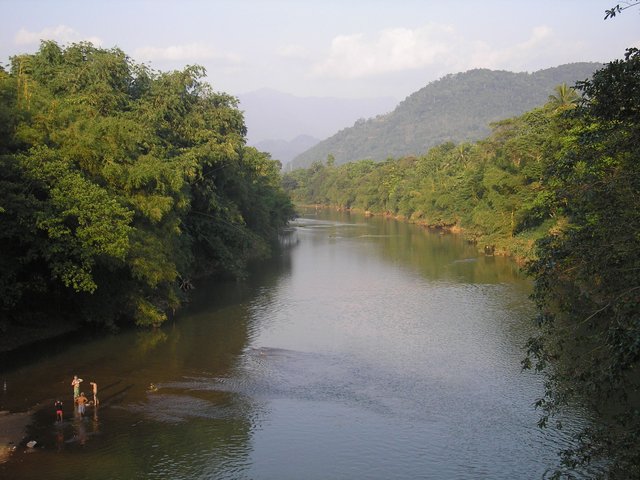How Crystals are born?
Corundum minerals or as people know them the red Ruby and the Sapphire, as all the other colors are called, have a hardness 9 on the Mohs scale, so after Diamond they are the most sought gems on the world.
Since ancient times Sri Lanka has been famous for its blue Sapphire. The fact that the world’s 1st 2nd and 3rd biggest blue Sapphires come from the Island, tells something about the abundance of the country’s rich gem deposits. But what is the story behind it?
The stones that are found today might have been born about 500 million years ago in the crust of the Earth. The magma beneath consist of a silicate-melt and has a temperature over 1500 ° Celsius. Yet, closer to the crust it is cooler, and the differences in the temperature keep it in motion creating enormous pressure. That makes the magma move into the cracks of the crust where the temperature is lower.
But for a crystal to be born sufficient pressure and sufficient temperature are still not enough: they need to have stable, constant circumstances for millions of years as crystallization is a very slow process. What happens is that the mass points (atoms and ions) create rhythmically repetitive bonds settling in evenly spaced point-sequences. They repeat the process spatially, so for the longer time nothing changes the bigger crystals are born.
Sapphires, for example, occur as hexagonal bipyramid crystals, but despite the incredible variety of crystal forms basically there are only seven types – that of the seven geometric shapes.
Rocks are formed on Earth as igneous, sedimentary, or metamorphic rocks. Igneous rocks, like Diamond, form when rocks are heated to the melting point which forms magma. Sedimentary rocks are formed from the cementing together of sediments, or from the compaction (squeezing together) of sediments, or from the recrystallization of new mineral grains which are larger than the original crystals. Metamorphic rocks, Corundum crystals, for example, form from heat and pressure changing the original or parent rock into a completely new rock. The parent rock can be either sedimentary, igneous, or even another metamorphic rock.
The most astonishing fact is that the rocks on Earth have been changed continually over time from one rock type to another. This changing of rock types is called the "Rock Cycle". So, minerals and gems too have a life-cycle although it is much, much longer.
The diagram shows you the cycle:
http://volcano.oregonstate.edu/metamorphic-rocks-lesson-14
The global distribution of corundum deposits is linked to collision, rift and subduction geodynamics. In Sri Lanka there are sapphire deposits from three different ages, as three main periods of corundum formation are recognized:
• The Pan-African orogeny (750 to 450 million years ago), which produced primary gem corundum deposits in Africa, India, Madagascar and Sri Lanka. Many of these corundums are genetically related.
Dating back to 900 million years Sri Lanka, India, and Madagascar belonged to the same supercontinent Rodnia which drifted apart to different continents and subcontinents.
• The Himalayan orogeny took place just 45–5 million years ago, a result of the Indian subcontinent speeding north from Gondwana and colliding with the Asian plate which produced the marble-hosted corundum deposits in Asia;
In geologic terms, this was a continental train wreck as India dove some 2000 km under and into Central Asia. This resulted in not just the greatest mountains on the planet, but furious mineral-forming.
Together with the Pan-African orogeny, these two events are responsible for virtually all of the finest rubies and sapphires thus far discovered on Planet Earth.
Yet, there is a third period:
• The Cenozoic alkali-basalt extrusions (65 to 1 million years ago). The traditional sources are Kashmir, Myanmar, Sri Lanka and Thailand.
In most cases sapphires can be found at 6 to 18 miles underneath the surface of the earth. Over time, weathering and natural movements of the earth's surfaces exposed these sapphire deposits to humans. There are only a few places around the world that have been exposed by weathering to reveal the sapphire deposits within the earth.
The gem mines in the Ratnapura district are all secondary alluvial deposits that were formed millions of years ago, by the erosion of the gem-bearing igneous and metamorphic rocks in the surrounding mountainous region, which were subsequently washed down hills and deposited in the valleys and river basins below. One of the main rivers in Sri Lanka, the Kalu Ganga flows through the Ratnapura district. This river originates in the Adam’s Peak mountain range, also situated in the district, and gem-bearing gravel carried by this river had been deposited in the surrounding river basin and today most of the mines in these areas lie in the middle of rice (paddy) fields.
There, on the paddy fields, just behind our (Sunil’s) house were found those Sapphires and Corundums which you can see in Serendib jewels. Among the most perfect Sapphires and Rubies that are to be faceted, we can find the “katte” – as the Singhalese call it.
Corundum crystals that’s circumstances have changed over their formation, therefor they are not transparent, however, can have the most beautiful colors, often in exciting combinations, having the same hardness, similar physical and chemical compositions as Sapphire and Ruby. In English they are called root-Sapphires and root Rubies in distinction.
Serendib’s beautiful root Sapphires and Rubies are rather huge and would be unaffordable gems for many in their purest form. Wearing them will bestow you with all the beauty and energetic effects these gems have.



